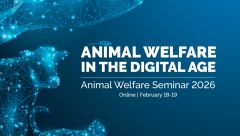The RSPCA says the recent debate on the stocking density of hens in free-range systems is confusing consumers and seriously jeopardising efforts to improve the welfare of hens.
The Australian Egg Corporation (AECL) is claiming consumer support for an eight-fold increase in free range stocking density on the back of focus-group feedback. But the video evidence used by the Corporation shows only a small proportion of birds moving around the edges of a grassy paddock – a far cry from the 20,000 birds per hectare that the industry would like us to accept as ‘free range’.
“Once again it appears that commercial, rather than animal welfare interests are behind the industry push to dramatically alter the boundaries of what consumers understand as free range,” said Melina Tensen, Scientific Officer, Farm Animals, RSPCA Australia.
“The RSPCA Approved Farming Scheme allows up to 2,500 birds per hectare if the range can be rotated. This is commercially viable, meets consumer expectations and most importantly meets the needs of hens. Moreover, on RSPCA Approved farms, space allowance and providing for the hens’ behavioural needs inside the shed is just as important as the quality of the range.”
RSPCA Australia’s experience from over a decade of promoting humane farming standards for layer hens is that birds will only use the range if it is accessible and attractive to them. An open paddock with no cover means most birds will stay inside – which negates the point of providing the range in the first place. A very high stocking density also means that the range rapidly degrades and becomes less and less appealing to the hens over time.
“Providing birds with a range area allows them to express natural behaviours such as dust-bathing, scratching and foraging. However, free range means nothing if hens are not going outside.”
“The Australian egg industry should not be dictating the standards for free-range egg production. Any change in the stocking density of free-range systems should be discussed in the context of a review of the Model Code, something that is well overdue.”
The RSPCA believes that quantitative, peer-reviewed scientific research is needed to understand the bird welfare implications of increasing stocking density on the range.
“Until we know more about how increasing stocking density affects hen welfare, consumers purchasing higher welfare eggs need to look for independent certification by a reputable organisation with a focus on welfare to be sure they’re getting what they pay for.”
“By focusing on free-range egg production, AECL is cunningly diverting the consumer’s attention away from the plight of hens in barren battery cages. In Australia today there are more than 11.1 million hens living in cages that allow them less space each than the size of an A4 piece of paper. That’s a stocking density of 182,000 hens per hectare. Let’s think about that.”
To see what an RSPCA Approved Layer hen farm looks like see http://www.youtube.com/watch?v=hhhRn5_0r3k






